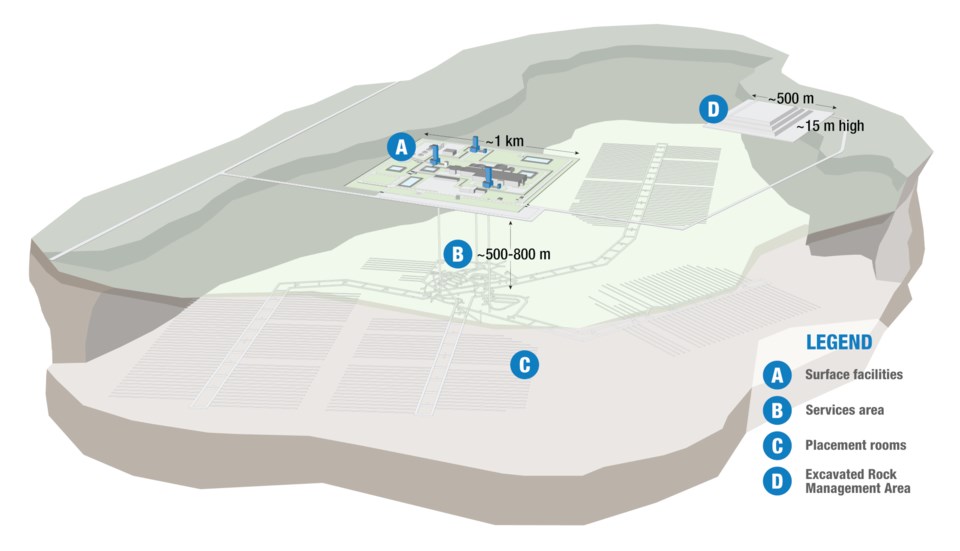The site selectors for a proposed underground nuclear waste repository in Ontaro say they won’t make a decision on a preferred location until the fall of 2024.
The Nuclear Waste Management Organization (NWMO) is pushing back the naming of a site by one year, attributing it to a series of pandemic-related lockdowns that hampered their work in the selection process.
Wabigoon Lake Ojibway Nation-Ignace area, an hour’s drive east of Dryden, in northwestern Ontario and the Saugeen Ojibway Nation-South Bruce area in southern Ontario are the two communities on the short list to host the deep geological repository.
Last week, 49 chiefs of the Nishnawbe Aski Nation (NAN) passed a resolution at their annual conference in Timmins opposing plans to haul and store nuclear waste in the region. Though the potential site of the repository is not in NAN’s treaty area, leadership hold concerns about the downstream impact of such a facility in the waterways of their traditional territories.
“We experienced a significant loss of time for face-to-face engagement and interaction, especially in communities exploring their potential to host the project,” said Lise Morton, NWMO’s vice-president of site selection in a news release.
“Making this small adjustment in timing also gives us and the potential host communities additional time to review and absorb new information as they consider if hosting the project aligns with their vision and priorities.”
The change in timing, the organization said won’t impact their overall schedule. Construction of the repository will begin in 2033 with the facility expected to be in operation in the early 2040s.
Since 2010, NWMO has been engaged in this process to find a permanent storage place for the long-term management of Canada’s used nuclear fuel.
Plans call for the repository to be built more than 500 metres below ground encased in “natural shield of solid rock.” The design would involve a series of engineered and natural barriers to ensure the facility's safety "for many thousands of years."
The organization said the plan will only proceed in a host area with “informed and willing hosts, where the municipality, First Nation and Métis communities, and others in the area are working together to implement it."
The organization said it’s made a lot of headway this year in releasing finding from a series of community studies, highlighting employment and workforce opportunities and spinoffs for area businesses, infrastructure improvements and construction of a Centre of Expertise in the chosen site that will attract “world-class academics from around the globe.”
In May, a successful full-scale demonstration of the engineered barriers that will contain and isolate the used nuclear fuel in the repository was carried out. Earlier this year, NWMO released its preliminary transportation plan on how the fuel will be transported safely to the site.




